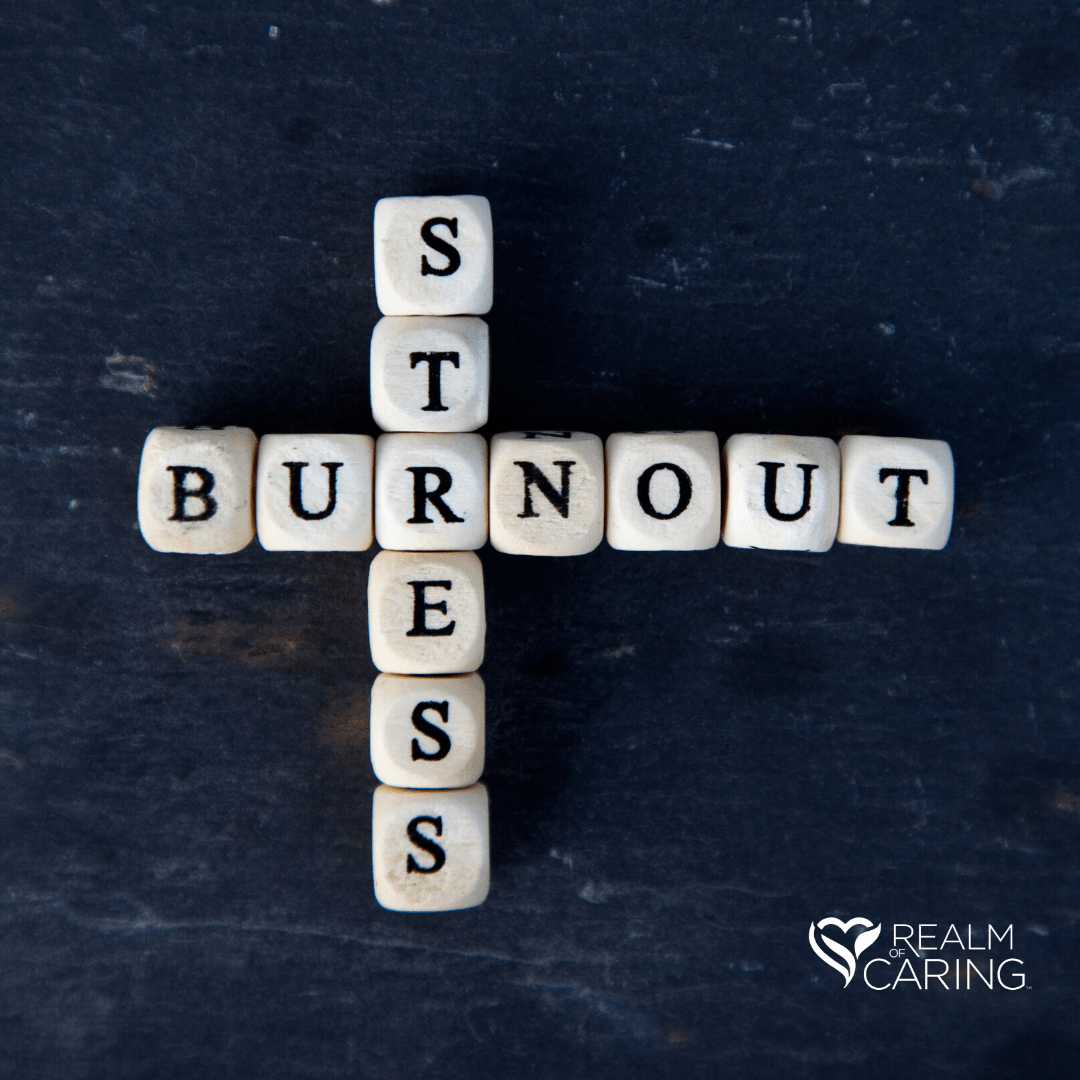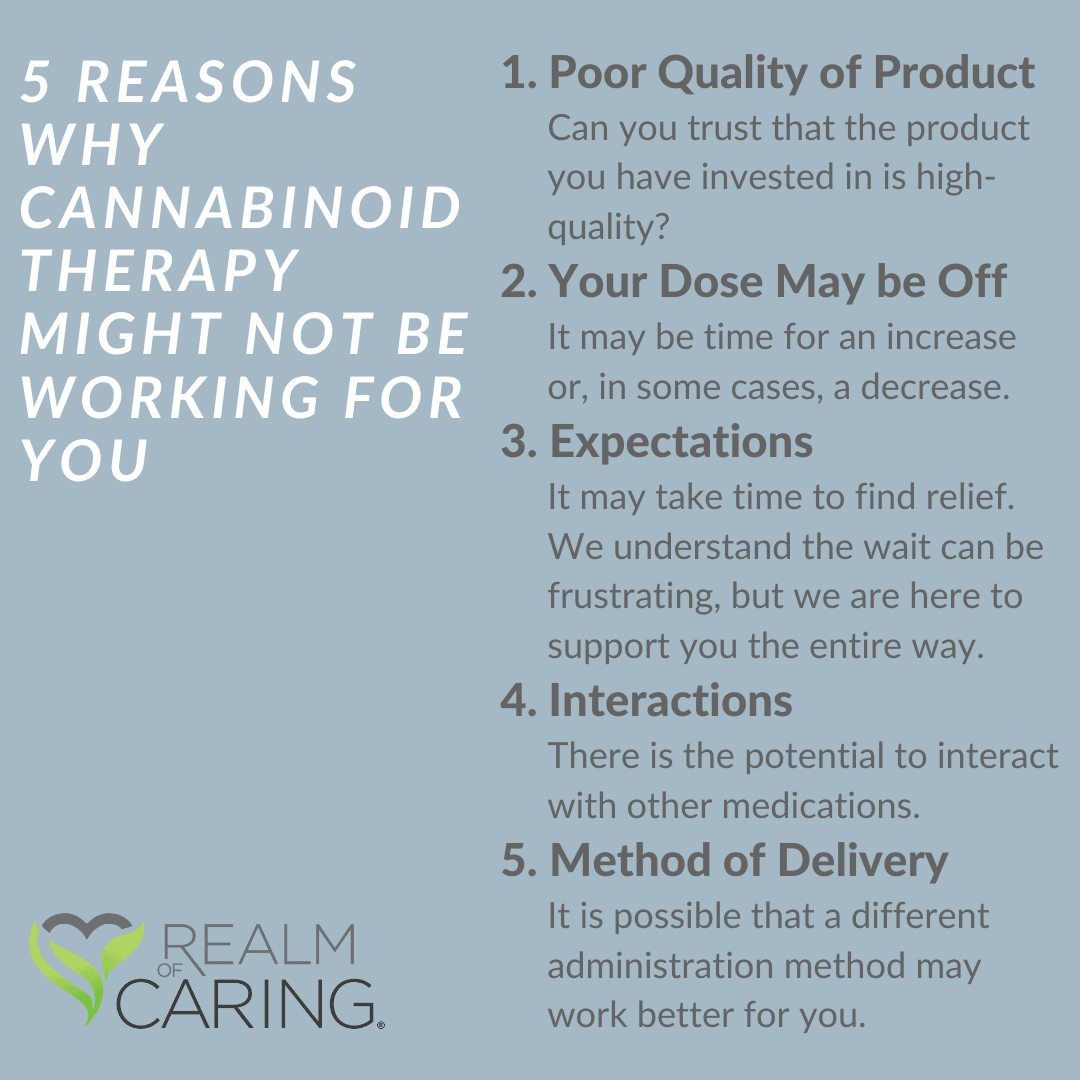Many people often give up on cannabinoid therapy because they are not seeing the results they are looking for. We see it a lot, people who try a product for a week and then decide it is not for them because they find no relief. So they stop taking CBD but continue to suffer from symptoms. We want you to be able to find success with your product(s), so we thought it might be helpful to discuss the five most common reasons why your cannabinoid therapy might not be working for you.
#1: Poor Quality of Product
A very common problem is that many CBD products are not regulated. You may actually find yourself with a product that contains little to no CBD. This has been shown on Washington Post, CBS News, NBC News, and more.
You will want to confirm the quality and consistency of a product before buying. To do this, the company should be able to provide you with a certificate of analysis or a batch report from a third party lab for the specific product you have bought or intend to buy. This testing is done to verify that what the label says is what you have in your bottle. It is also done to show that the product has been cleared for molds and pesticides. Cannabis is safe, research proves that. What is not safe is inconsistency, misleading labels, and lack of testing.
#2: Your Dose May be Off
Have you been taking your product for some time and have yet to find relief? Maybe you are taking a dropper-full of a tincture here and there. Maybe you tried a capsule and “didn’t feel anything”. CBD works through the accumulation of the Endocannabinoid System (ECS). Through consistent, twice a day dosing, we may be able to replenish our ECS with the cannabinoids it needs to bring our bodies to homeostasis. For most, this means it will take a few increases over the course of some weeks or months to find a true “therapeutic dose”. Every individual is different so what dose works for one may not be enough (or might be too much!) for another.
One other thing to keep in mind is that the CBD molecule is bi-phasic. Imagine a bell curve. Where you want to be is at the peak of said bell curve. This is where you are finding relief from your symptoms. Too little CBD may have no effect, so it may be a bit of a climb to get to that peak. On the flip side, too much CBD may tip you over to the other side. If this happens, from an oversaturation of cannabinoids, you may see exaggerated or new symptoms.
In short, this reason for cannabinoid therapy not working can be summed up by the Goldilocks principle. You do not want to have a dose that is too low or too high, you need to find your individual dose that happens to be just right.
#3: Expectations
It is hard to know what to expect of cannabinoid therapy, especially when it seems so many are claiming it to be a “cure-all”. The truth is, it may take time to find relief. When someone is experiencing chronic pain or in need of seizure control, that is not necessarily something that they want to hear. However, for cannabinoid therapy to be able to consistently show day to day relief, it first needs to accumulate in the ECS. If, after giving some time, no relief is felt then it is possible you may need an increase as was mentioned in the last point. All in all, we do not want you to expect too much upfront. Just as with any lifestyle change, progress takes time. It could take days, weeks, or months before that difference is realized.
#4 Interactions
Another thing to be mindful of when starting out with CBD therapy is the other medications that you may be taking. Joanne Doyle Petorongolo, a pharmacist at the Harvard-affiliated Massachusetts General Hospital states “as the number of medications increases, the potential for drug interactions goes up, and there’s an increased potential for side effects”. CBD is not advised for everyone depending on the medication being taken, the amount of medications being taken, or the treatment one is going through.
The first possible step to avoiding potential interactions is to space the administration of CBD and pharmaceuticals away from each other. You can also check what those potential interactions may look like with your doctor, a pharmacist, or an online drug interaction checker.
#5 Method of Delivery
We are sure you know by now, there are so many types of CBD products out there. From tinctures to capsules to edibles to topicals to vaping and everything in between. The percentage of CBD that is absorbed by the bloodstream, also known as bioavailability, will change depending on which method you are using. A tincture that is taken under the tongue, therefore can be absorbed mostly in the mouth, may have increased bioavailability. A product that needs to be broken down by the digestive system may have decreased bioavailability. That is not to say that edibles, capsules, and other methods that need to pass through the digestive system are not effective. For some, this can be the method that works best. It all depends on you, the individual. So if you are finding that one way “does not work” or simply is not a regimen that works for you, there are plenty of other options to try before ruling CBD out.
If you have any questions about this topic, a Realm of Caring Care Specialist is here to help. Call us at 719-347-5400 option 1, email us at info@realmofcaring.org, or sign up for a free client account HERE.
Disclaimer
The Realm of Caring Foundation specifically invokes the first amendment rights of freedom of speech and of the press without prejudice. These statements have not been evaluated by the food and drug administration. the products discussed are not intended to diagnose, cure, prevent or treat any disease. Realm of Caring always recommends when and wherever possible that licensed local healthcare professionals be consulted.
The Realm of Caring Foundation is an independent nonprofit with its own governing board. We do not produce or sell cannabinoid products, nor do we receive funds from the sale of other company’s products.





